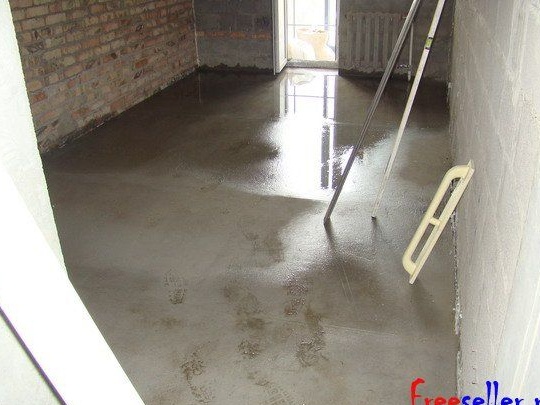
Every person who in his life, when he has built something, knows perfectly well, understands all the charms, and the joys of construction, or repair. Construction takes a huge amount of effort and money.
Many people, in order to avoid such events, hire a team of professional builders, and they fulfill the task assigned to them in due time. But it is a pleasure for people who have enough money, because services are not cheap. How to be a simple person who could not save for a construction site, or repair. Everything is simple, build, and repair on your own, without any help.
The author, having built his country house with the help of builders, decides to do the interior decoration on his own. Before starting work on finishing the premises, he carefully studies all the stages and all the nuances of this work.
First you need to fill the floors on the second floor, since the builders coped with the first. He consulted at one of the forums with the builders registered on this resource. And he came to the conclusion that it is necessary to fill the floor with a reinforcing screed.
This type of flooring is very good for its performance characteristics, such as increased hardness obtained through the use of reinforcing component.
Before starting work on pouring the floor plane, a layer of waterproofing should be applied to the concrete surface of the floor. Then follows a layer of insulation, on a poralonny basis. It is necessary to make a cold bridge from the external wall, it is just done by putting a plate of polystyrene, or a similar insulation, from the wall at least 1 meter. Next, the reinforcing mesh is laid, so that everything works out fine, you need to put small pieces of plywood or material similar to it under the reinforcement to raise it from the floor and then it turns out, as it were, in the middle of the solution. And already on top of all this cake, a cement screed is made.
And so now let's take a closer look at how he carried out these works on filling and reinforcing the floor, which he needed for this.
Materials: cement, insulation, reinforcing mesh.
Instruments: knife, rules, putty knife, shovel, hacksaw.
And so, the first thing is waterproofing.
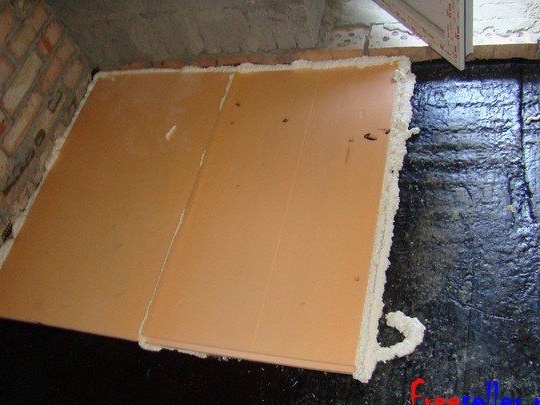
Next makes a bridge of cold.
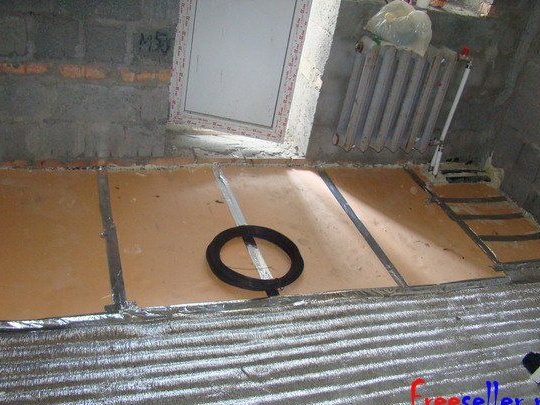
Then the insulation is laid.
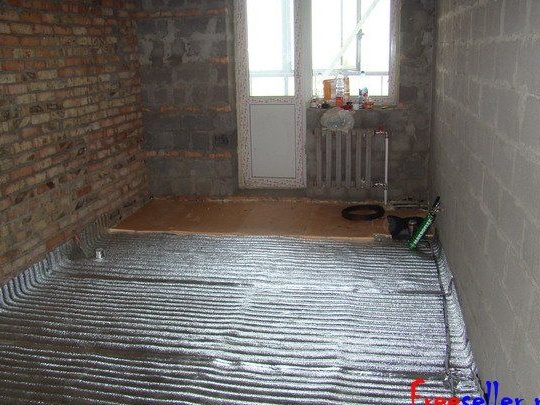
The reinforcing mesh is laid.
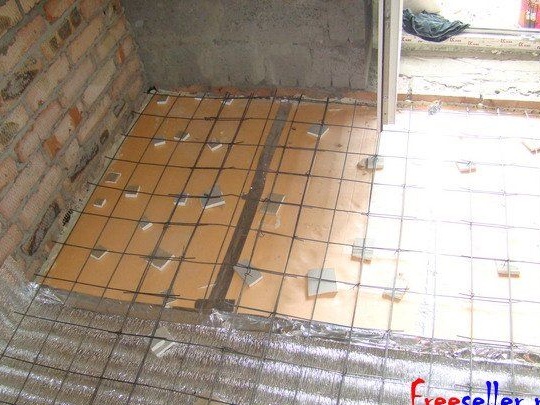
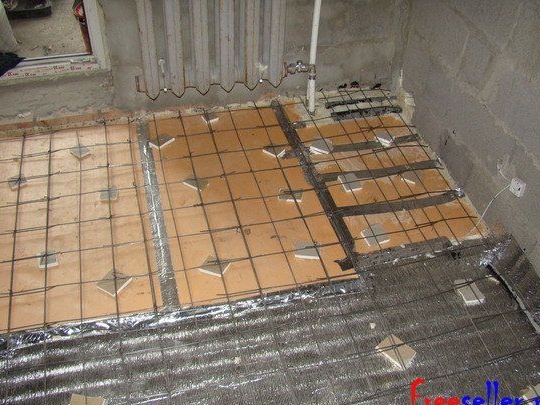
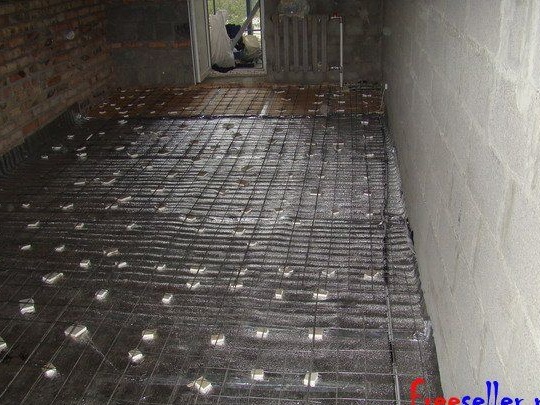
And then the surface is filled.
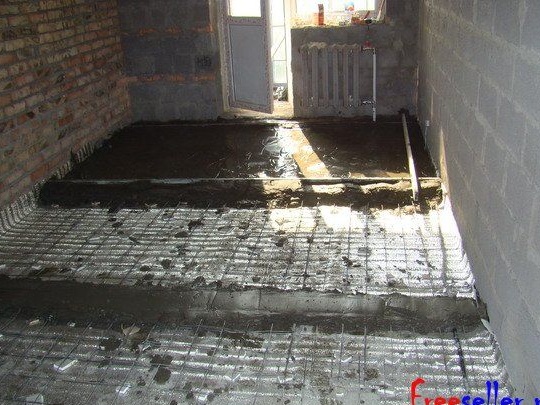
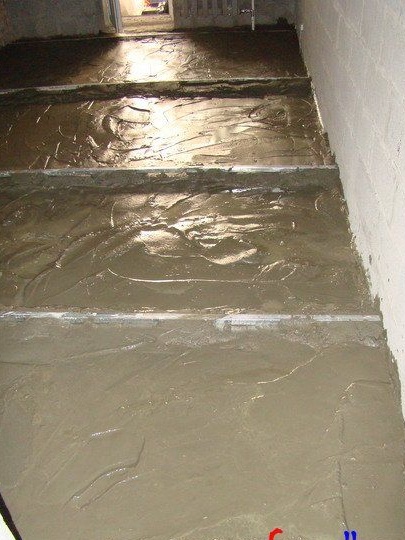
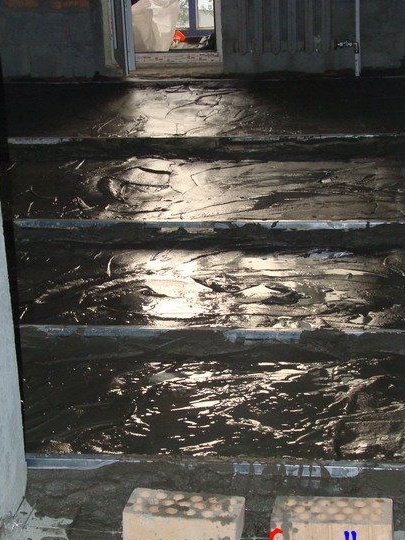
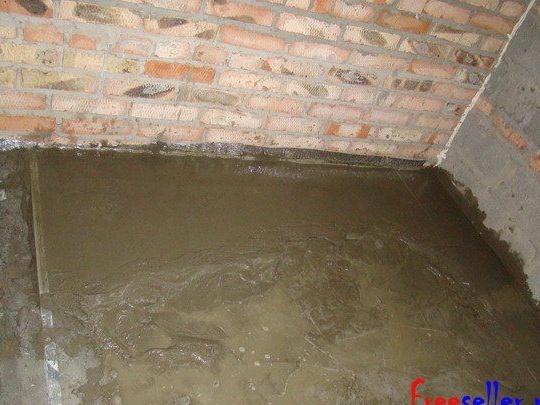
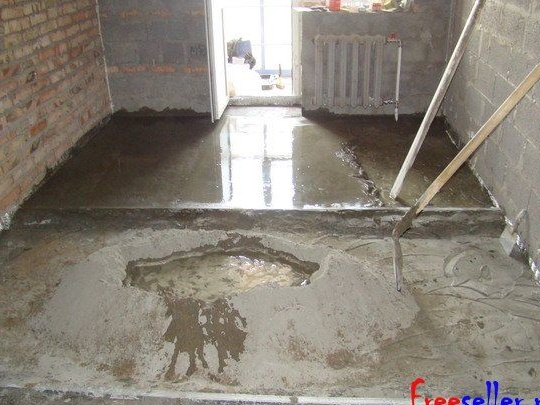
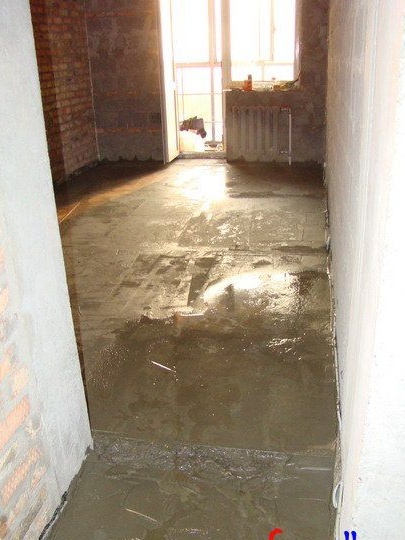
That’s all the pouring is completed, and one more tip from the author, while the cement is gaining strength, it is advisable to moisten it with water.

The flooring is finished, he is very pleased with his work and the money saved for the family budget.
The author recommends everyone to do more things do it yourself, pose, learn and create.
